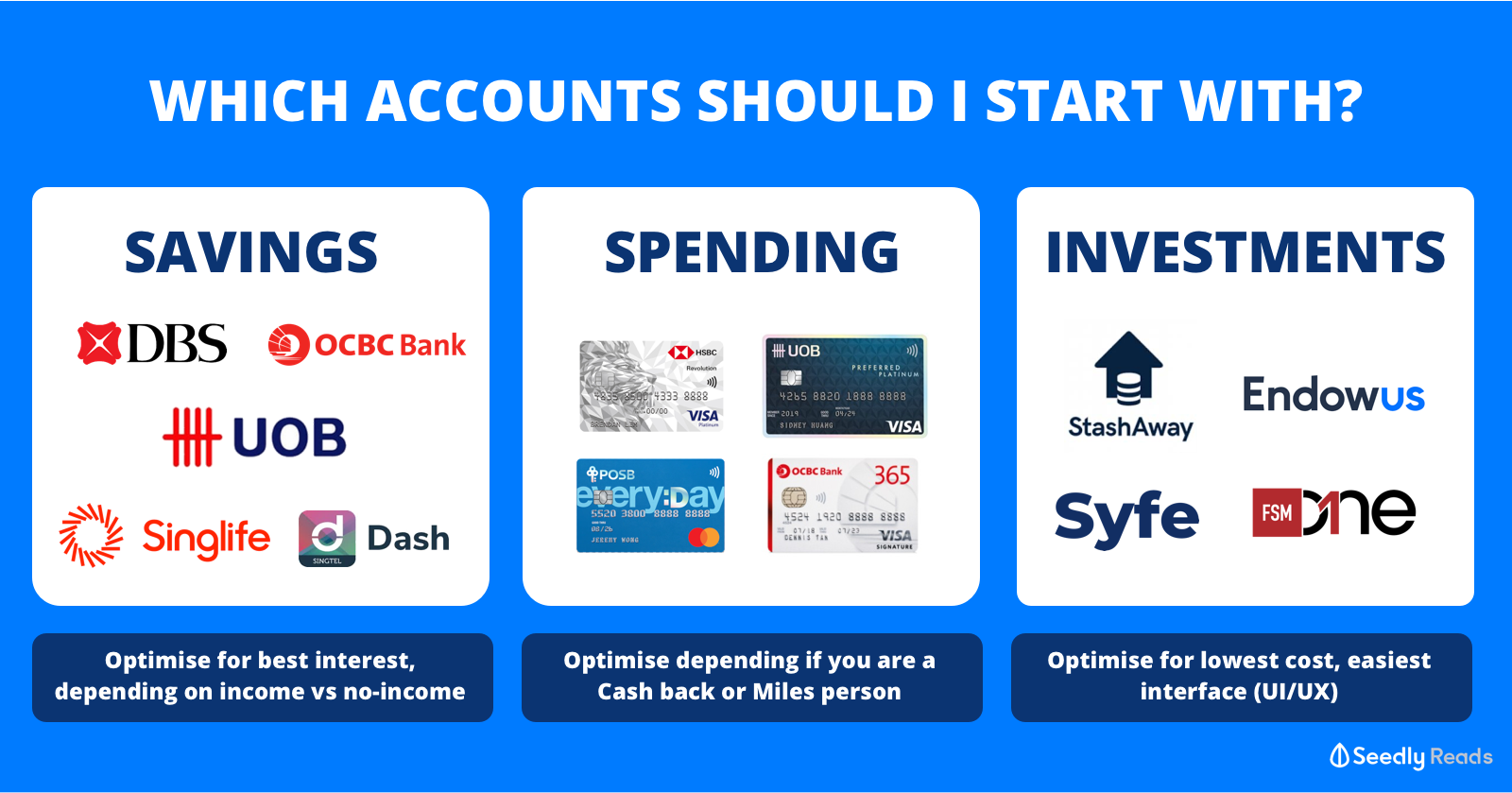It depends on how much capital you are having now. $10k? $100k?
My current personal savings/investment flow.
1. First 9.5k in Singlife (2.5% p.a.) - Emergency Funds
- 2.5% is applicable to the first 10k but I chose to put in 9.5k so that the monthly interest will still earn 2.5%, save the hassle of transferring out the interest or losing 1.5% p.a. on the interest.
- Next 19.5k in SCB Jumpstart (2% p.a.) - Spare Cash, some people call it war chest.
- 2% p.a. is applicable to first 20k. Same idea as point 1.
- Next 50k in DBS Multiplier (1.8% - 2.2% p.a.) - Daily expenses, investment funds, everything else.
- 3 Categories to unlock high interest. Salary, Credit Card, Investment.
- Monthly DCA on STI ETF $1000 via Invest Saver. This will help to unlock the 3rd category for higher interest.
- Lump Sum investment $10k per trade in SGX stocks. This is done once every few months. Buy thru DBS Vickers Cash Upfront (for each 10k trade, fees around $15)
Basically, I would have liquid cash of about min $29k (in point 1 and 2) to max $79k (remaining $50k in Multiplier). When my multiplier account starts to accumulate to about 10k - 20k, I'll start doing lump sum investment for higher returns.
For the stocks, I start with SGX Blue chip stocks for stability and dividends. Then slowly build up my portfolio with other SMEs. I also buy into US market S&P500 ETFs.











It depends on how much capital you are having now. $10k? $100k?
My current personal savings/investment flow.
1. First 9.5k in Singlife (2.5% p.a.) - Emergency Funds
Basically, I would have liquid cash of about min $29k (in point 1 and 2) to max $79k (remaining $50k in Multiplier). When my multiplier account starts to accumulate to about 10k - 20k, I'll start doing lump sum investment for higher returns.
For the stocks, I start with SGX Blue chip stocks for stability and dividends. Then slowly build up my portfolio with other SMEs. I also buy into US market S&P500 ETFs.